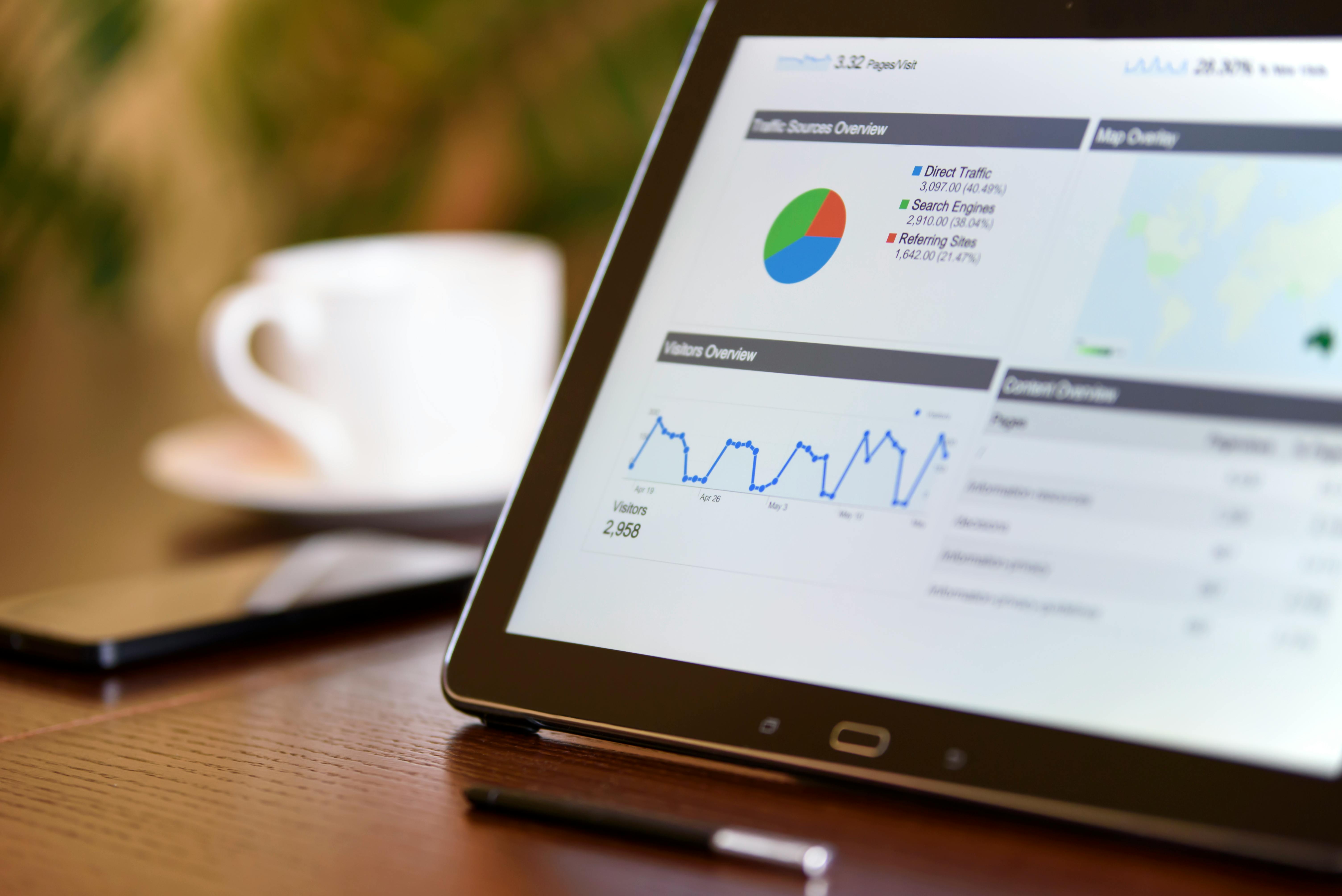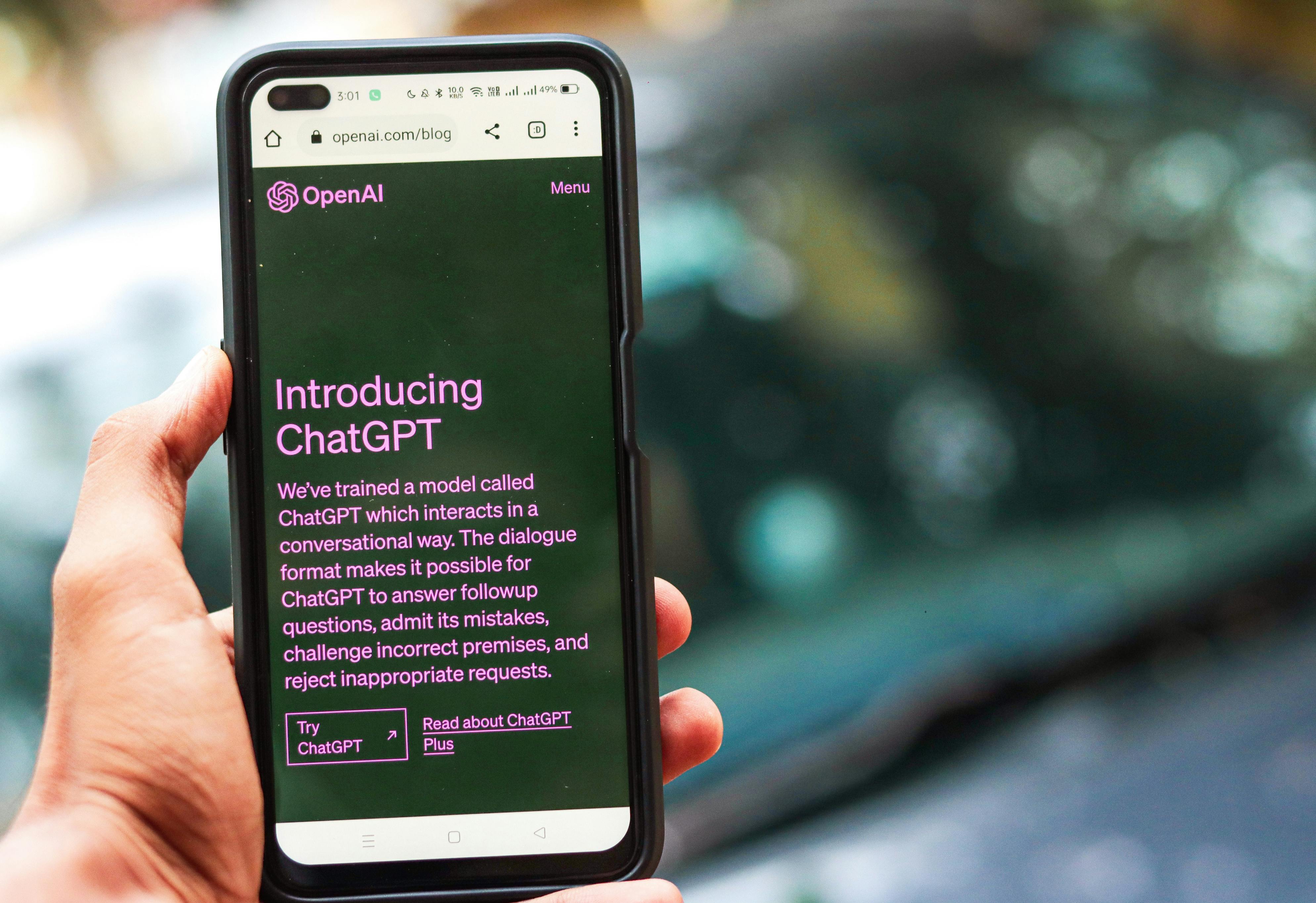
Unveiling the Power of Traffic Bots: Boost Your Website's Visibility and Performance
Have you ever wished for a more streamlined way to increase visibility and traffic to your website? Look no further - traffic bots might just be the solution you've been seeking. In today's fast-paced digital world, where competition is fierce, leveraging these intelligent software programs can help transform your website's visibility in unprecedented ways.
Traffic bots are automated tools designed to mimic human behavior, generating a significant amount of website traffic by visiting web pages, clicking on links, engaging with content, and even making purchases. Unlike traditional methods of increasing visibility that rely solely on organic growth or paid ads, traffic bots offer a more direct and efficient approach.
These bots are capable of dramatically improving your website's visibility by engaging in activities that boost its search engine ranking. In essence, they create an illusion of genuine user interaction, fooling search engines into believing that your website is highly relevant and popular within its niche. As search engines typically prioritize popular websites in their rankings, this can prove instrumental in driving organic traffic to your site.
One of the primary advantages of utilizing traffic bots lies in their ability to effortlessly navigate through various online platforms while maintaining a low profile. By utilizing proxies to mimic unique IP addresses and emulating human-like browsing patterns, they remain undetectable to search engine algorithms designed to weed out artificial bot-driven traffic. This ensures the integrity and long-term effectiveness of your website's visibility-boosting efforts.
But it doesn't stop there. Traffic bots can do more than simply increase website visibility. They can also aid in lead generation and conversion rate optimization. By emulating human behavior from initial customer engagement to completing transactional activities, these bots improve your chances of gaining loyal customers or clients. Whether you run an e-commerce store or provide specialized services, traffic bots can prove immensely beneficial.
However, it's important to note that while traffic bots hold significant potential for transforming your website's visibility, their successful implementation requires precision and customization. Utilizing professional traffic bots and configuring them with the right parameters is essential to obtain optimal results. Choosing the wrong approach or relying on subpar tools can have adverse consequences, including search engine penalties or a negative impact on your domain's reputation.
In conclusion, traffic bots offer an innovative solution to amplify your website's visibility, attract organic traffic, generate leads, and enhance conversion rates. By employing these sophisticated automated tools effectively, you can establish your website as a force to be reckoned with in the digital realm. Remember, for maximum benefits it's important to explore reputable options, ensure proper automation configurations, and keep abreast of changing search engine algorithms. The potential is immense - so embrace the power of traffic bots and give your website the visibility it truly deserves.
 Exploring the Different Types of Traffic Bots and Their UsesExploring the Different Types of traffic bots and Their Uses
Exploring the Different Types of Traffic Bots and Their UsesExploring the Different Types of traffic bots and Their UsesTraffic bots have become valuable tools in the world of online marketing and website optimization. These automated software programs are designed to mimic human behavior and interact with websites, providing various benefits to website owners and marketers. Let's delve into different types of traffic bots and their respective uses.
1. Web Crawlers:
Web crawlers, also known as spiders or web spiders, are used by search engines to gather data from websites. These crawling bots index web pages for search results. By strategically designing your website and optimizing it for search engine ranking factors known as SEO (Search Engine Optimization), you can enhance the visibility of your site to web crawlers and thereby improve your organic search traffic.
2. Ad Click Bots:
Ad click bots simulate user behavior by automatically generating clicks on ads. Their purpose is to artificially inflate ad metrics such as click-through rates (CTR). While this may seem appealing to some in an effort to boost performance, utilizing these bots intentionally violates ad platforms' policies, puts your online reputation at risk, and can lead to penalties or account suspensions.
3. Bot Traffic Analyzers:
Bot traffic analyzers are tools that help differentiate between legitimate human website visitors and automated bot visits. By analyzing various metrics, these tools can determine if specific website traffic is generated by bots rather than real users. This information enables website owners to garner accurate insights concerning genuine visitors and take relevant actions for improved user experience.
4. Social Media Bots:
Social media bots are automated scripts interacting with social media platforms like Facebook, Twitter, or Instagram. They are mostly utilized by social media marketers or influencers to automate various activities such as liking posts, following users, leaving comments, or sharing content. However, it's important to note that misuse of these bots might violate platform policies, restrict engagement growth organically, or even result in account suspensions.
5. Chat Bots:
Chat bots, also referred to as virtual assistants or automated agents, are programmed to interact with users and provide assistance or answer questions on websites, messaging apps, or social media platforms. These bots utilize artificial intelligence and natural language processing techniques and are supremely useful in delivering personalized customer service experiences, automating support inquiries, or facilitating transactional interactions.
6. Website Testing Bots:
Website testing bots are extensively used to conduct automated testing processes on websites and web applications. They simulate user behavior by performing various tasks like navigating pages, submitting forms, and checking for functionality or performance issues. These bots immensely help identify bugs, optimize user experience, and ensure smooth website operations.
Overall, traffic bots have diverse uses across different digital domains. While some types aid website owners and marketers in enhancing efficiency and improving user interaction rates, others may indulge in unethical practices that can harm online reputations and lead to penalties. Understanding the various types of traffic bots will enable users to make intelligent choices about deploying these tools wisely and ethically to achieve desired outcomes.
 How Traffic Bots Augment SEO Strategies and Improve Search Engine Rankingstraffic bots can significantly enhance SEO strategies and boost search engine rankings. These automated tools are designed to simulate human behavior, generating large volumes of website traffic within a short span of time. By employing traffic bots strategically, website owners can improve their online visibility and gain an edge in the highly competitive digital landscape.
How Traffic Bots Augment SEO Strategies and Improve Search Engine Rankingstraffic bots can significantly enhance SEO strategies and boost search engine rankings. These automated tools are designed to simulate human behavior, generating large volumes of website traffic within a short span of time. By employing traffic bots strategically, website owners can improve their online visibility and gain an edge in the highly competitive digital landscape.One key advantage of using traffic bots is their ability to generate substantial traffic numbers. When search engines analyze a website's performance, they take into account various metrics, including the number of visitors. With a traffic bot, website owners can artificially increase visitor numbers, thereby creating an impression of popularity. This increased popularity can positively impact search engine rankings by signaling to algorithms that the website is receiving substantial organic traffic.
Furthermore, traffic bots also help to improve search engine rankings through the generation of organic search visits. Search engines prioritize websites that receive high-quality organic traffic – those visitors who find the website via relevant searches and stay engaged with its content. Traffic bots can simulate these actions by navigating through multiple pages on a site, spending an appropriate amount of time browsing different sections, and even interacting with elements such as forms or feedback mechanisms. By imitating genuine usage patterns, traffic bots contribute to improved search engine rankings.
Additionally, traffic bots can play a crucial role in reducing bounce rates and increasing time spent on a website. High bounce rates (the percentage of visitors who leave after viewing only one page) can negatively affect search engine rankings. However, using traffic bots allows website owners to simulate user engagement and encourage longer browsing sessions. By artificially extending time spent on a page and reducing bounce rates, websites appear more favorable to search engine algorithms and are consequently granted better rankings.
Moreover, the use of traffic bots can help website owners to compete against their rivals for specific keywords. A higher ranking for targeted keywords enables increased visibility in search results. Traffic bots can be set up to repeatedly use these keywords and navigate a website similarly to how organically acquired visitors would. This constant reinforcement of specific keywords allows search engines to perceive a higher relevancy for them, positively influencing rankings.
Nevertheless, it is important to note that while traffic bots can augment SEO strategies by enhancing search engine rankings, their use must be approached with caution. Search engines are becoming increasingly sophisticated at detecting illegitimate traffic. Therefore, excessive or improper usage of traffic bots may result in penalties and even delisting from search engine results. Integrating traffic bot approaches into a comprehensive SEO strategy requires careful planning and monitoring to ensure compliance with search engine guidelines.
To harness the power of traffic bots effectively, website owners should strive for a balance between artificially stimulating traffic and maintaining an organic user base. By leveraging traffic bots smartly along with other genuine SEO techniques, website owners can optimize their online presence, increase visibility, and ultimately achieve higher search engine rankings.
 The Art of Generating Organic vs. Bot Traffic: Balancing for Optimal PerformanceGenerating traffic bot to a website is crucial for its success and visibility, but not all traffic is created equal. When it comes to website traffic, there is a distinct difference between organic traffic and bot traffic. Understanding this difference is essential for balancing your website's performance and optimizing its overall impact.
The Art of Generating Organic vs. Bot Traffic: Balancing for Optimal PerformanceGenerating traffic bot to a website is crucial for its success and visibility, but not all traffic is created equal. When it comes to website traffic, there is a distinct difference between organic traffic and bot traffic. Understanding this difference is essential for balancing your website's performance and optimizing its overall impact.Firstly, let's define organic traffic. Organic traffic refers to visitors who land on your website naturally, without any direct manipulation or artificial means. These visitors find your website through search engine results pages (SERPs), social media referrals, backlinks from other reputable websites, or by directly typing your website address in their browser.
Organic traffic brings valuable benefits to your website. Firstly, it indicates that people are genuinely interested in the content you offer and that your website has a strong online presence. Secondly, organic traffic often leads to higher conversion rates as visitors are more likely to engage with your site and its offerings.
On the other hand, bot traffic consists of visitors generated by automated software commonly known as bots or spiders. These bots are designed to simulate human behavior and can be used for various purposes, such as monitoring website performance, collecting data, or even engaging in fraudulent activities.
While bot traffic can artificially increase the number of visitors to a website, it lacks the authenticity and intent of real users. Bots typically do not interact with content in meaningful ways, resulting in inflated statistics and misleading performance metrics.
Now that we have distinct definitions for both organic and bot traffic, striking a balance between the two is vital for optimal website performance. Here are some key considerations:
1. Monitoring and Filtering: Regularly monitor your website's analytics to identify any suspicious or malicious bot activity. Implement filters and security measures to detect and block unwanted bots trying to access your site.
2. Content Quality: Emphasize creating high-quality content that caters to your target audience’s needs. This approach helps attract genuine organic traffic organically while discouraging bots that typically lack interest or engagement.
3. SEO Optimization: Invest time and effort into Search Engine Optimization (SEO) strategies to improve your website’s visibility in organic search results. By targeting relevant keywords, optimizing metadata, and enhancing content structure, your site will gain credibility and attract valuable organic traffic.
4. Referral Traffic: Leverage reputable websites or blogs to create backlinks that direct traffic to your site. Quality referrals facilitate organic traffic growth while minimizing reliance on bot-generated visitors.
5. Implementing Captchas: Integrate captcha measures into forms and interactive elements on your website to minimize bot access and ensure genuine user engagements. This reduces the likelihood of artificial traffic activity.
6. Evaluating Performance Metrics: Regularly assess various performance metrics such as bounce rate, time on site, and conversion rate to evaluate the effectiveness of organic traffic versus bot traffic. Make informed decisions about optimizing various channels accordingly.
Remember, the ultimate goal is to cultivate a healthy balance of human-generated and bot-filtered organic traffic. Aggressively focusing solely on generating high visitor numbers through bots will result in inaccurate insights, potentially damage your website reputation, and impede true growth.
By striking an equilibrium between genuine interaction-driven organic traffic and stricter controls against bot imposters, you'll drive better performance, boost conversions, and ensure a more successful online presence overall.
 Measuring the Impact of Traffic Bots on Website Analytics and KPIsMeasuring the Impact of traffic bots on Website Analytics and KPIs
Measuring the Impact of Traffic Bots on Website Analytics and KPIsMeasuring the Impact of traffic bots on Website Analytics and KPIsIn the realm of website analytics, it is crucial to have reliable and accurate data to analyze the performance of a website. However, the presence of traffic bots can heavily impact the accuracy of this data and subsequently affect the interpretation of key performance indicators (KPIs). Here, we will explore the challenges associated with measuring the impact of traffic bots on website analytics.
Firstly, let's understand what traffic bots are. They are automated computer programs designed to simulate human behavior on websites. Some bots are developed with legitimate purposes, such as search engine crawlers or chatbots, while others only aim to deceive or manipulate website metrics for various reasons.
One way traffic bots affect website analytics is by inflating traffic metrics like visitors, page views, and session duration. For instance, these bots can generate bogus visits that artificially increase page views and session durations, leading to skewed data. Consequently, KPIs like bounce rate, average session duration, and conversions may be misrepresented due to the bot-generated traffic.
Additionally, traffic bots can undermine the accuracy of referral and source data. By generating false referrals or concealing their true sources, these bots make it difficult to determine the genuine origin of incoming web traffic. This creates challenges when analyzing marketing campaigns, evaluating SEO strategies, or assessing the effectiveness of partnerships. Bots can alter traffic patterns in referral data and may even impersonate direct visits to further complicate tracking efforts.
Furthermore, traffic bots pose a significant threat to measuring user engagement metrics accurately. When they artificially interact with a website through fake clicks or form submissions, it leads to inaccurate assessments of user engagement. Engagement metrics like click-through rates (CTR), conversion rates, or lead generation statistics can be severely distorted as a result.
It is important for organizations to proactively identify and filter these traffic bot activities from their website analytics. Regularly monitoring unusual traffic patterns, unusually high page views from single IP addresses, or high bounce rates can be a good starting point. Advanced analytics solutions can help detect and eliminate suspicious activities through machine learning algorithms that distinguish bots from genuine human visitors.
Moreover, harnessing advanced techniques like IP blocking, CAPTCHA implementation, or utilizing bot detection software can help mitigate the impact of traffic bots on website analytics and KPIs. Collaborating with web developers, security experts, or relying on specialized tools can provide better protection against potential harm caused by traffic bots.
In conclusion, the impact of traffic bots on website analytics and KPIs should not be underestimated. These automated programs skew data accuracy, distort user engagement metrics, and compromise the reliability of various KPIs. Organizations must invest in measures to effectively detect and mitigate these nefarious bots to ensure accurate website analytics, which in turn leads to informed decision-making and better website performance.
 Navigating Legal and Ethical Considerations of Using Traffic BotsNavigating Legal and Ethical Considerations of Using traffic bots
Navigating Legal and Ethical Considerations of Using Traffic BotsNavigating Legal and Ethical Considerations of Using traffic botsUsing traffic bots has become a popular and sometimes controversial topic in the digital marketing world. While these tools can offer convenience and potential benefits for businesses, it is important to be aware of the legal and ethical implications associated with their use. This article explores some key considerations to help marketers make informed decisions.
1. Artificial Traffic Generation and Fraud
One of the primary concerns surrounding traffic bots is the potential for fraudulent activities. Generating artificial traffic or using bots to inflate website statistics can be illegal in many jurisdictions. It may violate laws related to false advertising, consumer protection, unfair business practices, copyright infringement, or fraud. Businesses should ensure they comply with local regulations to avoid legal consequences.
2. Misleading Analytics and Data
Using traffic bots can distort website analytics since it becomes difficult to differentiate between genuine visitors and bot-generated traffic. Decision-making based on unreliable or manipulated data can lead to poor business strategies and inaccurate performance evaluations. Marketers need to be cautious when utilizing traffic bots to ensure that their data analysis is reliable, truthful, and aligned with ethical standards.
3. Impersonal Interactions
Traffic bots are often programmed to simulate human-like interactions, such as ad clicks or form submissions. However, this practice may cross ethical boundaries as it can deceive users, advertisers, or even search engines by creating an illusion of genuine engagement. Transparency in disclosing the use of automated processes becomes vital to maintain ethical standards.
4. Violation of Platform Policies
Various platforms, including search engines and social media networks, have strict policies against using traffic bots as they undermine the integrity of their user base or advertising systems. Violating these policies can result in penalties such as suspensions, bans, or loss of advertising privileges. Adhering to platform guidelines ensures the continued ethical usage and minimizes potential legal consequences.
5. Intellectual Property Infringement
Certain proprietary elements within websites or online platforms can be protected by intellectual property laws which traffic bots might inadvertently violate. Copying content, duplicating advertisements, or disproportionately using copyrighted material can result in copyright infringement claims. Businesses should confirm that their usage of traffic bots does not infringe upon intellectual property rights.
6. Unintended Consequences
Using traffic bots poses the risk of unintended consequences both for the businesses and online users. This includes inadvertently interrupting web services, triggering cybersecurity mechanisms (such as CAPTCHA) due to suspicious activities, or even hindering genuine users from accessing resources. Such disruptive incidents challenge the ethics of utilizing traffic bots and compel businesses to implement measures ensuring a safe, efficient, and user-friendly environment.
In conclusion, while traffic bots provide potential advantages in digital marketing, it is crucial to consider the legal and ethical dimensions associated with their use. Adhering to regulations, maintaining transparency with users, abstaining from fraudulent activities, respecting intellectual property rights, and prioritizing reliable data become imperative for marketers looking to use traffic bots responsibly and successfully.
 Customizing Traffic Bot Strategies for Various Industries and NichesCustomizing traffic bot Strategies for Various Industries and Niches
Customizing Traffic Bot Strategies for Various Industries and NichesCustomizing traffic bot Strategies for Various Industries and NichesCreating a successful online presence is imperative for businesses across various industries and niches. Utilizing traffic bots can be an efficient way to drive more visitors to a website, increase brand visibility, and ultimately boost conversions. However, it's important to customize these strategies as per specific industries and niches. Here are some key considerations:
1. Researching industry-specific keywords:
Each industry has its unique set of keywords that potential customers commonly use while searching online. It's vital to identify these keywords and integrate them into the traffic bot strategy. Conduct thorough keyword research using tools like Google Keyword Planner or SEMrush to uncover the most relevant keywords for the target industry.
2. Targeting appropriate platforms:
Different industries have varying popular platforms where their target audience actively engages. Some industries might benefit more from social media platforms such as Facebook or Instagram, while others might find success with search engine traffic from Google. Selecting the appropriate platforms is crucial when customizing traffic bot strategies.
3. Tailoring content for specific industries:
The content displayed on websites catered to different industries should reflect their specific needs and preferences. For instance, an e-commerce store's traffic bot strategy would be different from a blog in the fashion industry. Personalize the content generated by the bot to alignbetter with the users of a particular niche or industry for enhanced engagement and better conversion rates.
4. Applying scheduling and timing strategies:
Timing is often a crucial aspect of running successful traffic bot campaigns across various industries, depending on when the target audience is most active online. For instance, a food delivery service might see better results by initiating campaigns during lunch or dinner hours whereas promotions for technical products may be timed for after-hours or weekends when potential customers have more free time.
5. Incorporating industry-specific hashtags:
Social media platforms heavily rely on hashtags for content categorization. Research industry-specific hashtags that are relevant to the target niche and industry. Integrating these hashtags into traffic bot campaigns can increase visibility to the audience that actively consumes content related specifically to that industry or niche.
6. Analyzing competitor strategies:
Keeping an eye on competitors can provide valuable insights regarding successful traffic bot strategies customized for a specific industry or niche. Study the tactics they employ, assess the keywords they target, platforms they use, and how they engage with their audience. By understanding what works well for others in your industry, you can refine and adapt your own approaches for better results.
In conclusion, effective customization of traffic bot strategies plays a pivotal role in driving successful outcomes across various industries and niches. Taking into account industry-specific keywords, suitable platforms, tailored content, appropriate scheduling, relevant hashtags, and competitor analysis empowers businesses to boost their online presence and effectively connect with their target audience.
 Best Practices for Integrating Traffic Bots with Content Marketing EffortsIntegrating traffic bots with content marketing efforts can be a valuable strategy for boosting website traffic and increasing visibility. Here are some best practices to consider when using traffic bots in conjunction with your content marketing efforts.
Best Practices for Integrating Traffic Bots with Content Marketing EffortsIntegrating traffic bots with content marketing efforts can be a valuable strategy for boosting website traffic and increasing visibility. Here are some best practices to consider when using traffic bots in conjunction with your content marketing efforts.1. Understand the Purpose:
First and foremost, it's crucial to have a clear understanding of why you are using traffic bots in your content marketing strategy. Are you aiming to increase overall website traffic, expand brand reach, or generate more leads? Identifying your goals will help you effectively align your traffic bot activities with your content marketing efforts.
2. Quality Content is Essential:
The cornerstone of any successful content marketing initiative is high-quality and valuable content. Investing time and effort into creating valuable, engaging, and share-worthy content should remain your top priority. Traffic bots can drive users to your website, but if the content fails to meet their expectations, they will quickly abandon it. Focus on quality above all else and aim to provide value to your target audience.
3. Mind SEO Elements:
Keywords, meta tags, meta descriptions, headers, and other SEO elements play a vital role in driving organic traffic to your website over the long term. Make sure that your content is optimized for search engines so that when traffic bots bring visitors to your site, they encounter relevant and useful information.
4. Leverage Social Media:
To enhance the impact of traffic bot-generated visitors, have a strong social media presence. Promote your blog posts, articles, videos, or other forms of content across various social media platforms where your target audience is most active. Engage with users who visit your website via the bots on social media platforms as well.
5. Incorporate Calls to Action (CTAs):
Once you have gained increased website traffic through traffic bots, it's essential to convert those visitors into leads or customers. Create specific calls-to-action within your content that guide users towards desired actions such as subscribing to newsletters or signing up for free trials. Including attractive and relevant CTAs can help capitalize on the augmented traffic, yielding better results.
6. Monitor Bot-Generated Traffic:
Implement tools to track and measure traffic generated by the bots accurately. Utilize analytical tools like Google Analytics to understand where the traffic is coming from, how it behaves, and its impact on your overall marketing efforts. Monitor metrics such as bounce rate, time on site, and conversion rate improvements to assess the effectiveness of your traffic bot integration.
7. Aim for Natural Traffic Growth:
While bots can be beneficial in driving initial traffic, strive for natural growth over time. Create valuable content that connects with real people organically. Focus on building relationships with readers and encouraging genuine engagement to ensure long-term success. Don't solely rely on traffic bots as a substitute for cultivating an authentic audience.
By integrating traffic bots with content marketing efforts using these best practices, you can leverage increased website visitors to amplify brand exposure, generate leads, and ultimately enhance ROI. Remember, quality content remains at the core of this strategy—the synergy between effective content marketing principles and intelligent traffic bot use allows you to achieve sustainable growth and success.
 The Future of Web Traffic: Innovations in Traffic Bot TechnologiesThe future of web traffic is an ever-evolving landscape influenced by constant technological advancements. As technology continues to shape and transform various industries, the traffic bot technologies are also undergoing innovations to meet the growing demands of online businesses and marketers. These cutting-edge developments in traffic bot technologies promise exciting possibilities for driving targeted web traffic to websites.
The Future of Web Traffic: Innovations in Traffic Bot TechnologiesThe future of web traffic is an ever-evolving landscape influenced by constant technological advancements. As technology continues to shape and transform various industries, the traffic bot technologies are also undergoing innovations to meet the growing demands of online businesses and marketers. These cutting-edge developments in traffic bot technologies promise exciting possibilities for driving targeted web traffic to websites. One major area of innovation lies in the field of artificial intelligence (AI). AI-powered traffic bots have already made significant strides in generating targeted and genuine web traffic. These bots are becoming increasingly sophisticated, using machine learning algorithms to analyze vast amounts of data and create more refined targeting strategies. By leveraging AI, traffic bots can better understand user behavior and preferences, tailoring their operations to optimize website visits and engagement.
Moreover, advancements in natural language processing (NLP) have led to the development of more intelligent chatbot-based traffic bots. These bots can interact with users more seamlessly by comprehending natural language inputs and providing relevant responses. These interactive features allow for a more personalized and human-like interaction with visitors, enhancing user satisfaction and increasing conversion rates.
Another area of innovation in traffic bot technologies revolves around enhancing site credibility and authenticity. With the rise of click fraud and ad fraud practices, traffic bots are being designed to replicate genuine user behavior. Innovative approaches such as mimicking variations in mouse movements, engagement duration, or page scrolling patterns aim to ensure that traffic generated by these bots looks and behaves like organic human traffic. By maintaining authenticity, these bots help in improving website visibility in search engine rankings and building trust with search engines.
In parallel, blockchain technology is emerging as a potential game-changer for web traffic management. Decentralized systems built on blockchain platforms offer increased transparency, accountability, and security when it comes to monitoring and verifying web traffic data. Traffic bots integrated with blockchain technology can provide an auditing capability that validates the quality of generated web traffic while also preventing fraud or manipulation.
Furthermore, the rising importance of mobile devices has prompted traffic bot technologies to adapt. A growing number of global internet users are accessing the web through their smartphones and tablets. Consequently, mobile-optimized traffic bots are being developed to deliver targeted traffic specifically tailored to mobile users. These bots leverage mobile-specific strategies like app installations, push notifications, or deep-linking to ensure optimal engagement and conversions on mobile platforms.
Ultimately, the future of web traffic lies in dynamic and adaptable traffic bot technologies that utilize AI, NLP, blockchain integration, and optimal targeting strategies. As these innovations unfold, they are anticipated to revolutionize the way online businesses drive traffic to their websites. With improved capabilities for authenticity, personalization, user interaction, and fraud prevention, the future truly seems promising for the effective utilization of traffic bot technologies in generating high-quality web traffic.
 Mitigating Risks: Protecting Your Website from Malicious Bot TrafficMitigating Risks: Protecting Your Website from Malicious Bot traffic bot
Mitigating Risks: Protecting Your Website from Malicious Bot TrafficMitigating Risks: Protecting Your Website from Malicious Bot traffic botOne of the biggest challenges that website owners face today is dealing with malicious bot traffic. Bots are computer programs or automated scripts that crawl the web, and while some bots serve legitimate purposes like indexing websites for search engines, many others pose a security threat.
Here are some essential measures you can take to mitigate the risks associated with malicious bot traffic:
1. Understand Bot Behavior: Gain insight into different types of bots and their behavior patterns. Bot detection tools can help you identify and categorize bots based on their activities on your website.
2. User-Agent Filtering: Regularly analyze your website logs and examine the User-Agent strings of visitors to detect any suspicious activities. Bots often have characteristic User-Agent strings, enabling you to identify and filter out malicious ones.
3. CAPTCHA Implementation: Including CAPTCHA challenges on forms can reduce the number of malicious bot submissions. By requiring users to prove their human identity, you can block automated attempts by bots.
4. IP Address Blacklisting: You can maintain a list of known bad IP addresses associated with malicious bot activities and block access from those specific addresses.
5. Rate Limiting: Implement rate limiting techniques to control the number of requests from individual IP addresses within a specific time frame. This prevents bots from overwhelming your website's resources and allows genuine users to access it smoothly.
6. Traffic Analysis: Monitor your web traffic patterns regularly to identify unusual activities originating from bots. Tools like Web analytics software can help in analyzing visitor behavior and highlighting any suspicious actions.
7. Web Application Firewall (WAF): Deploy WAF solutions that can detect and block various types of potentially harmful traffic, including malicious bots. These firewalls offer an additional layer of protection for your website.
8. Behavioral Analysis: Use behavioral analysis methods to distinguish between humans and bots by examining keystrokes, mouse movements, session duration, or other interaction patterns. This technique helps in identifying and blocking bot traffic at a more granular level.
9. Securing APIs: If you have APIs exposed for external usage, ensure they are protected with secure authentication methods like API keys or tokens. This prevents bots from abusing your APIs and stealing data.
10. Regular Updates and Patches: Keep your website's software up to date, including content management systems, plug-ins, themes, and any backend applications. Updating addresses known vulnerabilities that bots can exploit to gain unauthorized access.
11. HTTPS Encryption: Enable HTTPS on your website to encrypt data exchanged between the user's browser and your server. This prevents bots from intercepting sensitive information transmitted over unsecured connections.
12. Continuous Monitoring: Monitor traffic trends continuously, detect unusual patterns in real-time, and deploy tailored countermeasures promptly. Regularly reviewing logs and bot detection reports enables you to stay ahead of potential bot attacks.
By implementing these risk mitigation strategies, you can significantly reduce the threat of malicious bot traffic, protecting your website and ensuring a safer online experience for your users. Stay vigilant, adapt to evolving threats, and keep exploring new security measures to strengthen your defense against malicious bots.
 Leveraging AI and Machine Learning in the Development of Advanced Traffic BotsArtificial Intelligence (AI) and Machine Learning (ML) techniques have significantly transformed various areas of technology, including traffic bots. Traffic bots, automated programs that mimic human actions on websites and manipulate traffic, have seen a major improvement with the integration of AI and ML. Here's a comprehensive overview of how leveraging AI and ML has advanced the development of these sophisticated traffic bots.
Leveraging AI and Machine Learning in the Development of Advanced Traffic BotsArtificial Intelligence (AI) and Machine Learning (ML) techniques have significantly transformed various areas of technology, including traffic bots. Traffic bots, automated programs that mimic human actions on websites and manipulate traffic, have seen a major improvement with the integration of AI and ML. Here's a comprehensive overview of how leveraging AI and ML has advanced the development of these sophisticated traffic bots.One of the notable aspects enhanced by AI and ML in traffic bot development is its ability to replicate human behavior. With AI-driven algorithms, traffic bots can imitate realistic user actions such as scrolling, clicking, filling out forms, or even hovering over specific web elements. By learning from existing human interactions, these bots analyze patterns in user behavior and adapt accordingly, leading to more authentic actions resembling genuine users.
Additionally, AI has revolutionized the process of intelligent decision making for traffic bots. Incorporating machine learning algorithms allows the bots to recognize and respond to dynamically changing scenarios encountered on websites. For example, if a webpage undergoes alterations in its layout or structure, an ML-powered traffic bot can learn to adapt quickly and continue its intended action rather than getting stuck due to unanticipated changes. This enables the bot to stay efficient in achieving its objectives by promptly reacting to novel situations.
Furthermore, AI-powered traffic bots can demonstrate advanced cognition and learning capabilities. Through reinforcement learning algorithms, these bots navigate complex interactions with web pages by continually improving their decision-making skills. By entering a reward-based system akin to trial and error learning, these self-learning bots learn which interactions lead to successful outcomes and gradually refine their strategies accordingly. This innovation empowers traffic bots to handle dynamic environments effectively while evading detection mechanisms designed to identify automated activities.
The capacity for AI-driven traffic bots to simulate human footprints has led developers towards creating "human-like" browsing sessions with personalized touch-points. These technologically-advanced bots can generate randomized pauses between actions, mimic mouse movements corresponding to how a real user would interact, and perform activities consistent with typical browsing behavior. Consequently, the line between human-generated and automated website traffic becomes increasingly blurred, reducing suspicion and detection rates.
Additionally, AI facilitates intelligent bots capable of "scraping" information from websites. Advanced ML algorithms help these bots automatically extract desired data elements from web pages efficiently. By accurately understanding webpage structures and detecting specific patterns, they negate the need for meticulous programming or custom rule-building for each task. This not only optimizes the effectiveness of data extraction but also allows for scalability when dealing with a vast array of websites.
The role of AI in traffic bot development goes beyond just mimicking human actions but extends to improved anomaly detection mechanisms. Intelligent algorithms help identify deviations from usual network activity or changes in website behavior, quickly recognizing potential security threats, or flags that indicate countermeasures against automation are in place. By integrating AI-based anomaly detection, these bots maintain a low profile and prevent detection by counter-bot measures.
To summarize, leveraging AI and ML has significantly advanced the development of traffic bots by enabling human-like behavior replication, intelligent decision-making capabilities, self-improvement through continuous learning, personalized browsing experiences, efficient content scraping, and enhanced anomaly detection mechanisms. These advancements have contributed to the creation of highly effective and covert traffic bots capable of navigating dynamic web environments while emulating human users with precision, all powered by the potential of artificial intelligence and machine learning technologies.
 Case Studies: Success Stories of Websites That Used Traffic Bots EffectivelyCase studies, often known as success stories, highlight the effective use of traffic bots by various websites. These real-life narratives shed light on how traffic bots have positively influenced these platforms. By examining these case studies, we gain insight into the benefits and outcomes when traffic bots are harnessed effectively.
Case Studies: Success Stories of Websites That Used Traffic Bots EffectivelyCase studies, often known as success stories, highlight the effective use of traffic bots by various websites. These real-life narratives shed light on how traffic bots have positively influenced these platforms. By examining these case studies, we gain insight into the benefits and outcomes when traffic bots are harnessed effectively.One case study revolves around a budding e-commerce website struggling to generate substantial organic traffic to their online store. Faced with fierce competition, the company turned to a traffic bot to increase visibility and attract potential customers. By targeting specific keywords and driving targeted traffic to their site, they observed a noticeable surge in organic search rankings and sales. This resulted in a significant boost in revenue within a few months.
Another website-focused case study revolves around a newly established blog struggling to build an audience base. Despite publishing high-quality content regularly, their traffic remained stagnant, hampering their ability to monetize effectively. To address this issue, they implemented a traffic bot solution that brought in targeted visitors interested in their niche. As a result, their website gained traction, attracting genuine readers and increasing engagement levels. This led to sponsorships, affiliate marketing opportunities, and sustainable revenue growth.
In addition to e-commerce and blogs, traffic bots have also played a pivotal role in the success of online advertising platforms. One notable case study focuses on an ad network using traffic bots to evaluate the effectiveness of ad placements across partner websites. By simulating thousands of real user visits through automated bots, they measured conversion rates and click-through rates across various demographics and contextual factors. This data proved invaluable for optimizing ad campaigns and maximizing advertiser ROI.
A lesser-known application of traffic bots lies in search engine optimization (SEO). One particular case study showcases how an SEO agency utilized bots specifically developed for crawling and indexing web pages efficiently. By utilizing these bots, the agency significantly reduced mundane tasks such as monitoring visibility across search engines and identifying broken links. This allowed their team to focus on more strategic SEO initiatives, resulting in improved search rankings and increased website visibility for clients.
While these case studies exemplify the successful utilization of traffic bots, it is essential to highlight the importance of utilizing them responsibly and ethically. Websites must exercise caution, ensuring their use of traffic bots adheres to industry guidelines and remains within legal boundaries. By implementing traffic bot solutions effectively, websites can leverage the power of automation to boost visibility, attract potential customers, and achieve their growth objectives.
 Choosing the Right Traffic Bot Service: Features, Costs, and Reliability ReviewedChoosing the Right traffic bot Service: Features, Costs, and Reliability Reviewed
Choosing the Right Traffic Bot Service: Features, Costs, and Reliability ReviewedChoosing the Right traffic bot Service: Features, Costs, and Reliability ReviewedWhen it comes to driving traffic to your website, using a traffic bot service can be an effective strategy. However, with so many options available, it can become overwhelming to select the right one for your needs. To help you make an informed decision, let's explore the key factors to consider: features, costs, and reliability.
Features are essential when evaluating traffic bot services. Look for advanced functionalities such as browser emulation, user agents customization, and the ability to simulate real human-like behavior. These features contribute to making the generated traffic appear natural and authentic, increasing its value for your website.
Additionally, ensure that the bot service allows you to customize different parameters such as referral sources, page access durations, and click patterns. This level of control enables you to mimic targeted visitor behavior and align the generated traffic with your goals.
Consider the capability of rotating IP addresses as well. Traffic coming from different IP addresses enhances authenticity and reduces the likelihood of being flagged as generating artificial traffic by analytics systems. Look for services that offer a pool of high-quality proxy servers for optimal IP rotation.
Now let's discuss costs. Traffic bot services can vary greatly in their pricing structures. Be wary of extremely low-cost options, as they often compromise on quality. It's better to invest in a reputable service that may have higher initial costs but delivers reliable results over time. Consider it as an investment in boosting your website's visibility and attracting potential customers.
Reliability should be a primary concern before choosing a traffic bot service. Read reviews or seek recommendations from other website owners who have used the service in the past. Look for services that prioritize customer support and technical assistance, as issues or questions may arise during your usage.
Consider whether the chosen bot service provides regular updates to adapt to changes in search engine algorithms or analytics systems that detect abnormal traffic patterns. Reliable providers continuously enhance their algorithms to provide high-quality traffic without being detected, ensuring consistent results for your website.
It's crucial to find a balance between features, costs, and reliability when choosing the right traffic bot service for your website. By prioritizing features that create natural-looking traffic, investing in a reputable service, and ensuring its reliability through reviews and customer support, you can maximize the benefits of using a traffic bot to drive traffic to your website.
 Crafting an Effective Workflow: From Selecting to Monitoring Your Website's Bot TrafficCrafting an Effective Workflow: From Selecting to Monitoring Your Website's Bot traffic bot
Crafting an Effective Workflow: From Selecting to Monitoring Your Website's Bot TrafficCrafting an Effective Workflow: From Selecting to Monitoring Your Website's Bot traffic botEffective workflow management lies at the core of ensuring your website's traffic is directed from legitimate sources while eliminating unnecessary bot traffic. In today's digital landscape, where bots can wreak havoc on analytics and server resources, it is essential to have a well-crafted workflow in place. Through a comprehensive selection and monitoring process, you can optimize your website's performance and web traffic data accuracy. Here are the key components to consider:
1. Understanding the Purpose:
Begin by gaining a clear understanding of why you want to analyze your website's bot traffic. Identify what specific metrics or goals you want to achieve through this analysis.
2. Defining Selection Criteria:
Develop robust criteria for selecting the type of website traffic that falls under the "bot" category. Define broad characteristics or patterns associated with nefarious bot activity or unwanted traffic. This allows you to differentiate bots from desirable traffic originating from search engines and other legitimate sources.
3. Analyzing Historical Data:
Gather historical data about your website's traffic patterns using reliable analytics tools. Identify any suspicious trends or abnormal spikes in traffic that could indicate bot activity.
4. Implementing Robust Tools:
Utilize appropriate tools to manage and analyze your website's bot traffic effectively. These can include bot detection software, log analysis tools, or purpose-built solutions tailored to meet your specific needs.
5. Customizing Detection Parameters:
Configure your detection tools to meet the specific selection criteria defined earlier. Fine-tune these parameters iteratively over time for better accuracy in distinguishing bots.
6. Establishing Filtering Protocols:
Create filtering protocols to divert identified bot traffic away from impacting your genuine user experience, thus improving performance overall. You may decide to totally block certain types of bots or selectively restrict access based on different criteria.
7. Real-Time Monitoring:
Implement real-time monitoring systems to continually track incoming web traffic and promptly detect any potential anomalies. This allows for immediate action to be taken, safeguarding your website against malicious bot activity or other suspicious behavior.
8. Data Validation:
Consistently monitor your website analytics to verify the accuracy and integrity of the resulting data. Ensure that the implemented filtering protocols are indeed diverting bot traffic without affecting genuine user metrics.
9. Regular Analysis and Adjustments:
Conduct regular assessments of your workflow, analyzing patterns in bot traffic and refining your selection criteria as needed. Continuously evaluate the effectiveness of your filtering protocols while adjusting with changing trends, updates, and emerging bot techniques.
10. Staying Informed:
Stay updated on emerging bot traffic trends, industry best practices, and new detection techniques. Knowledge sharing within relevant communities helps you be prepared with proactive measures as bots evolve.
By following these steps, businesses can establish a comprehensive workflow empowering them to accurately identify, manage, and mitigate unwanted bot traffic. A carefully curated workflow not only guards against malicious activities but also ensures valid web analytics, allowing companies to make informed decisions based on reliable data.

